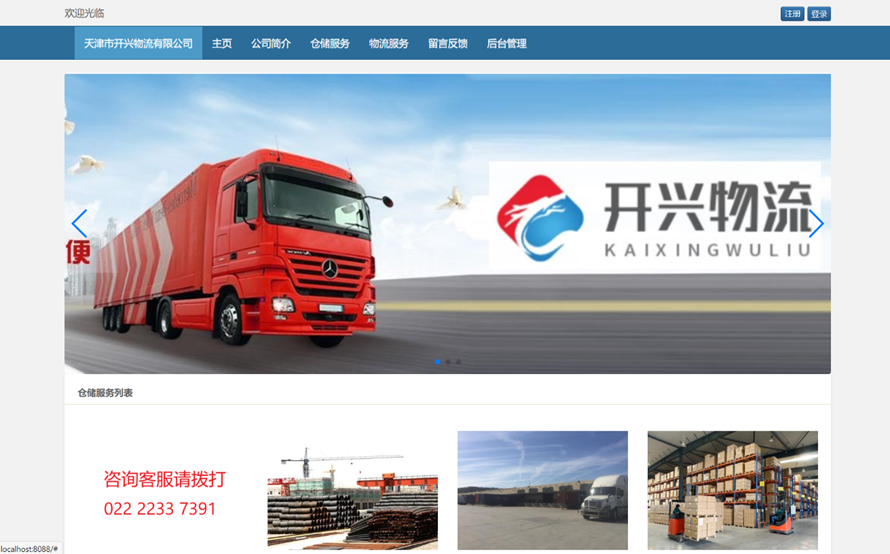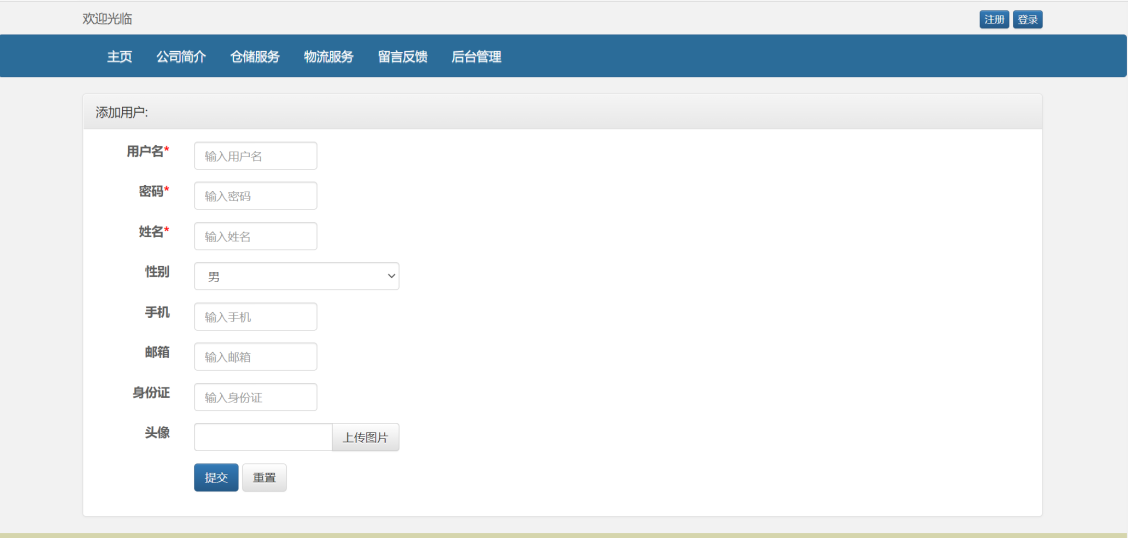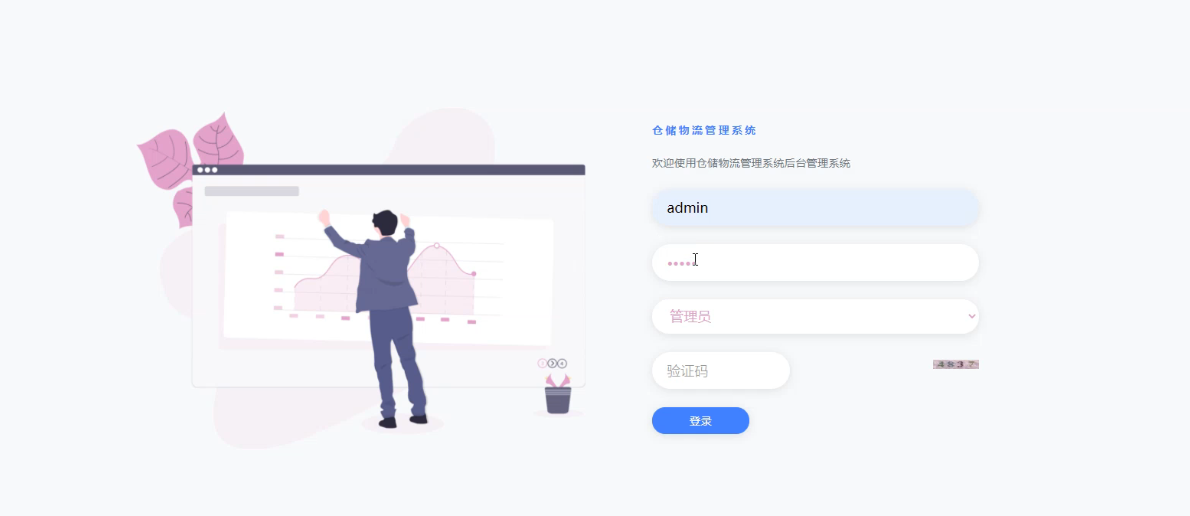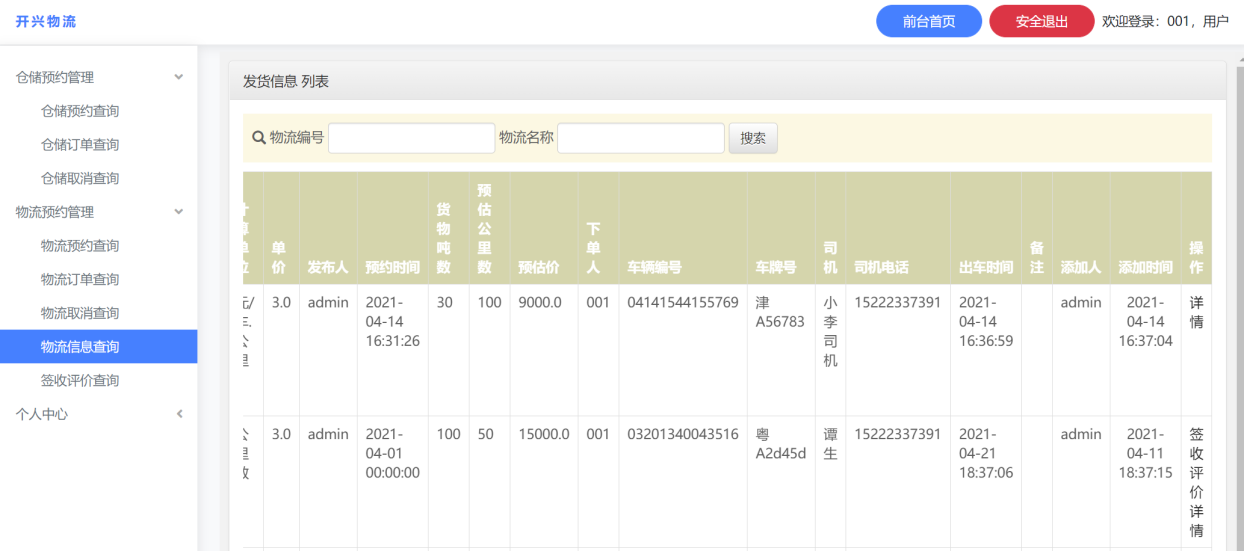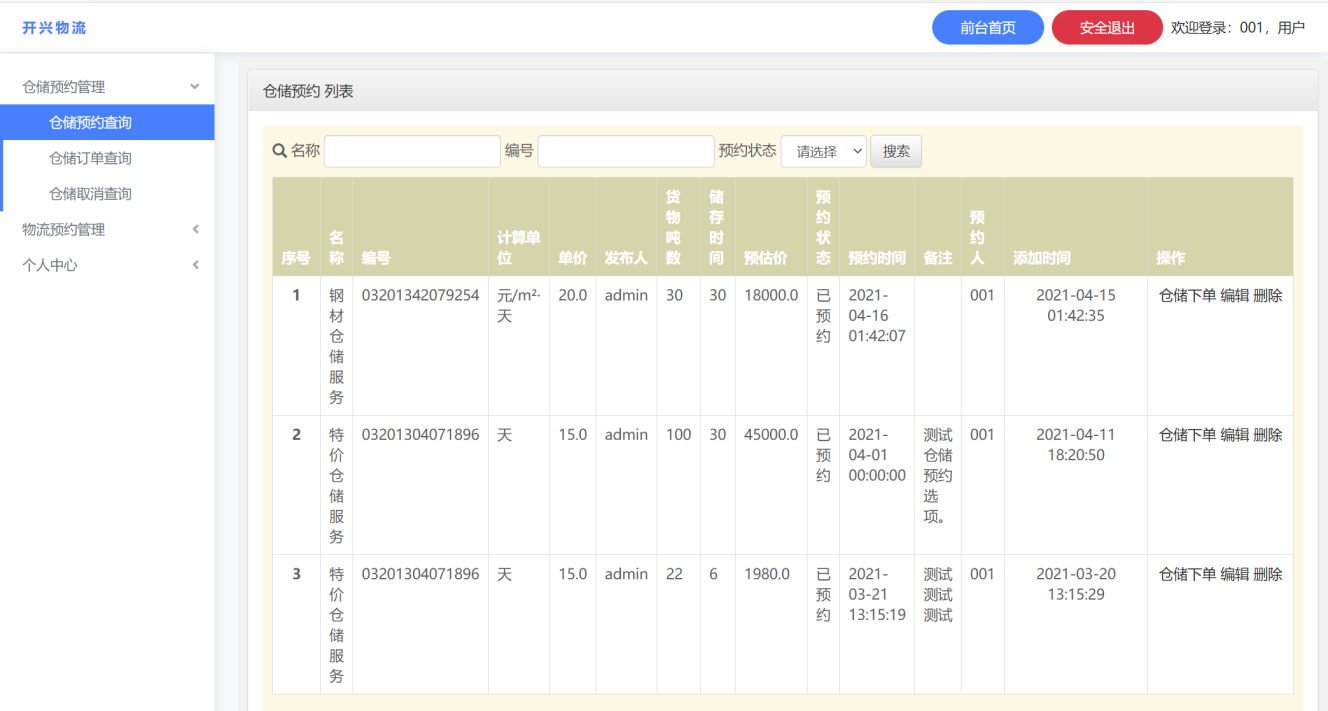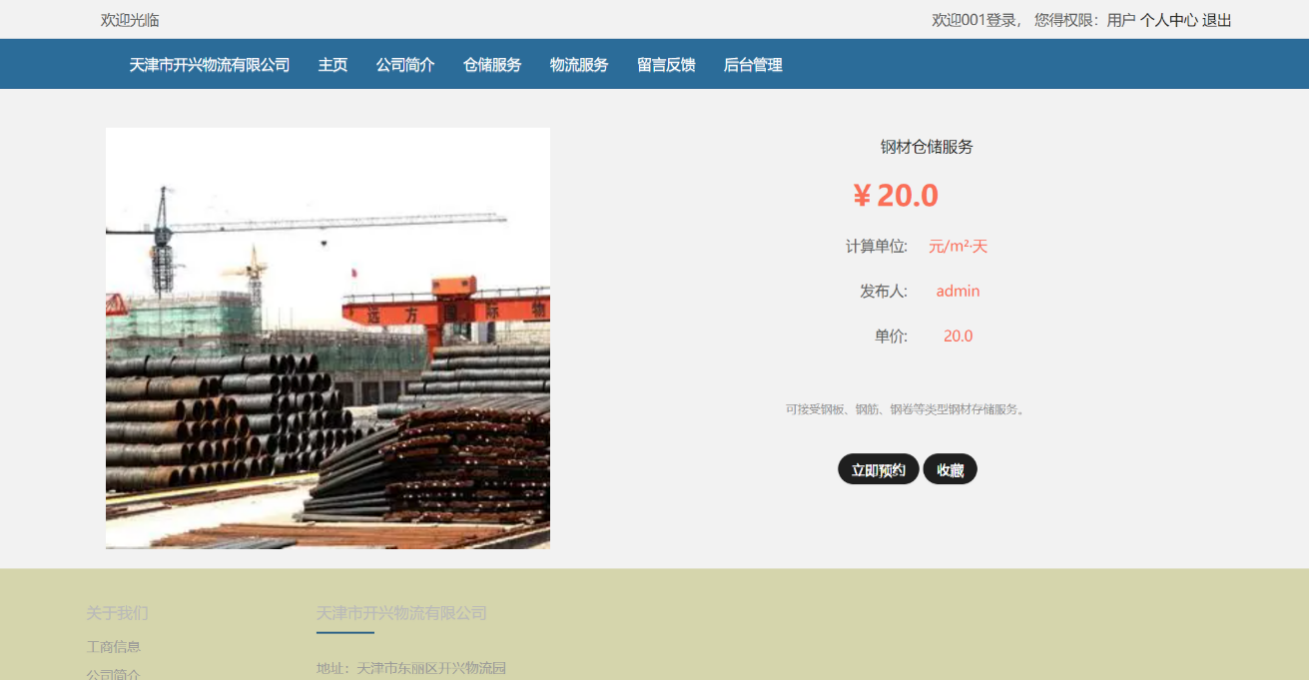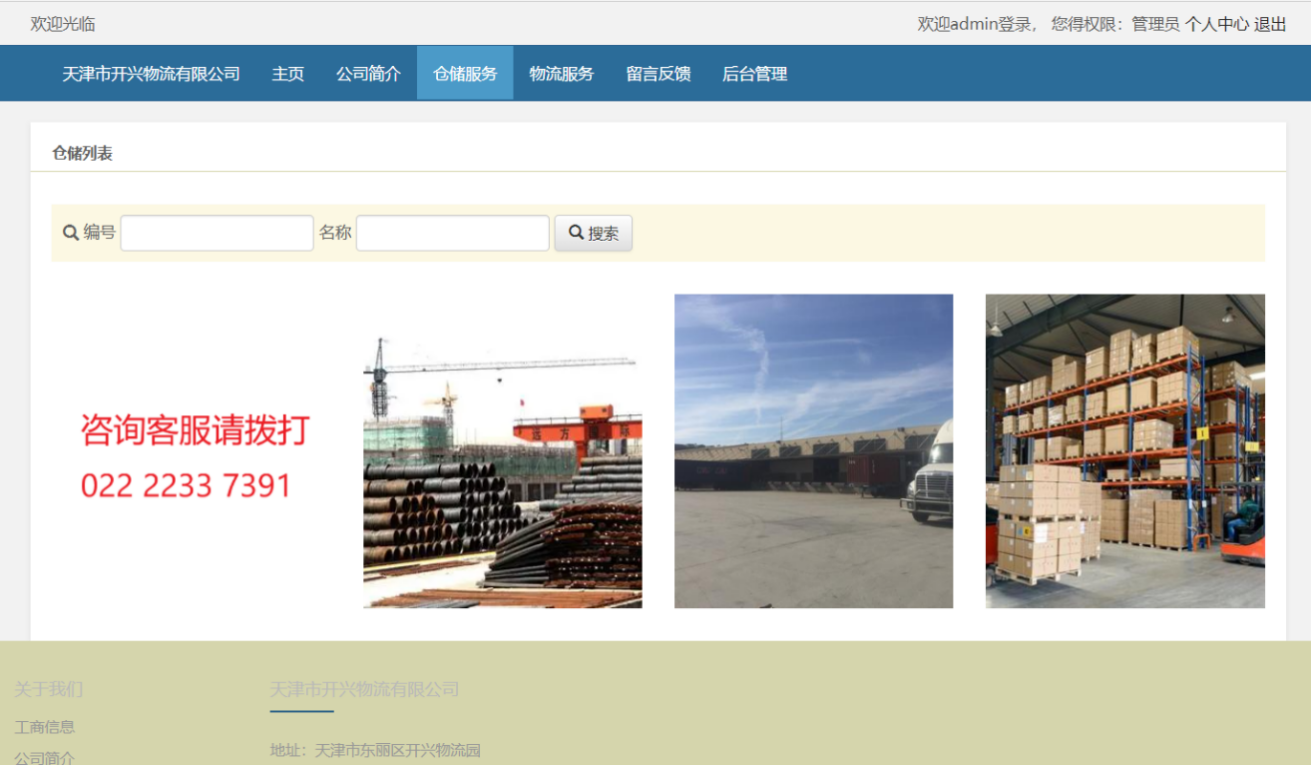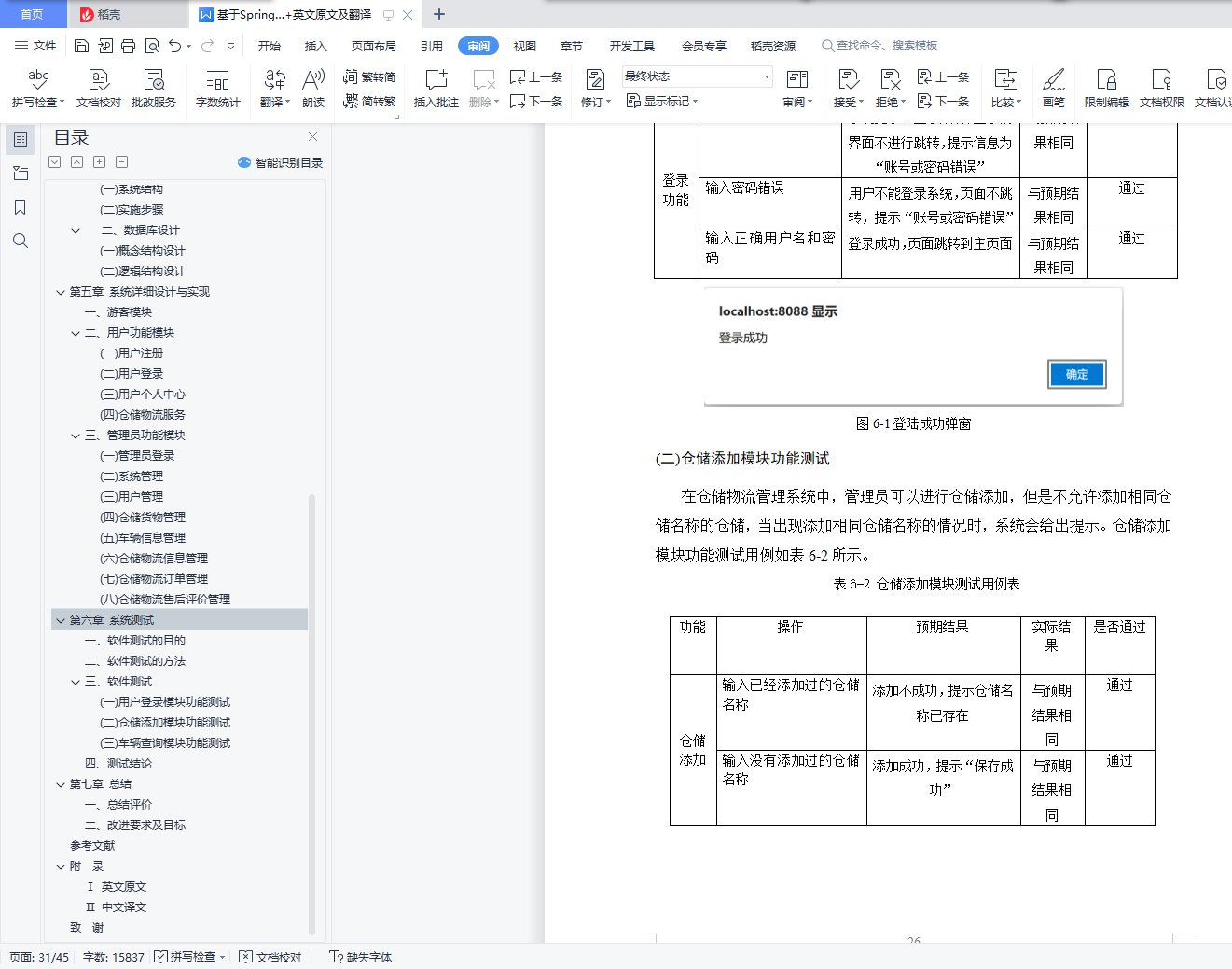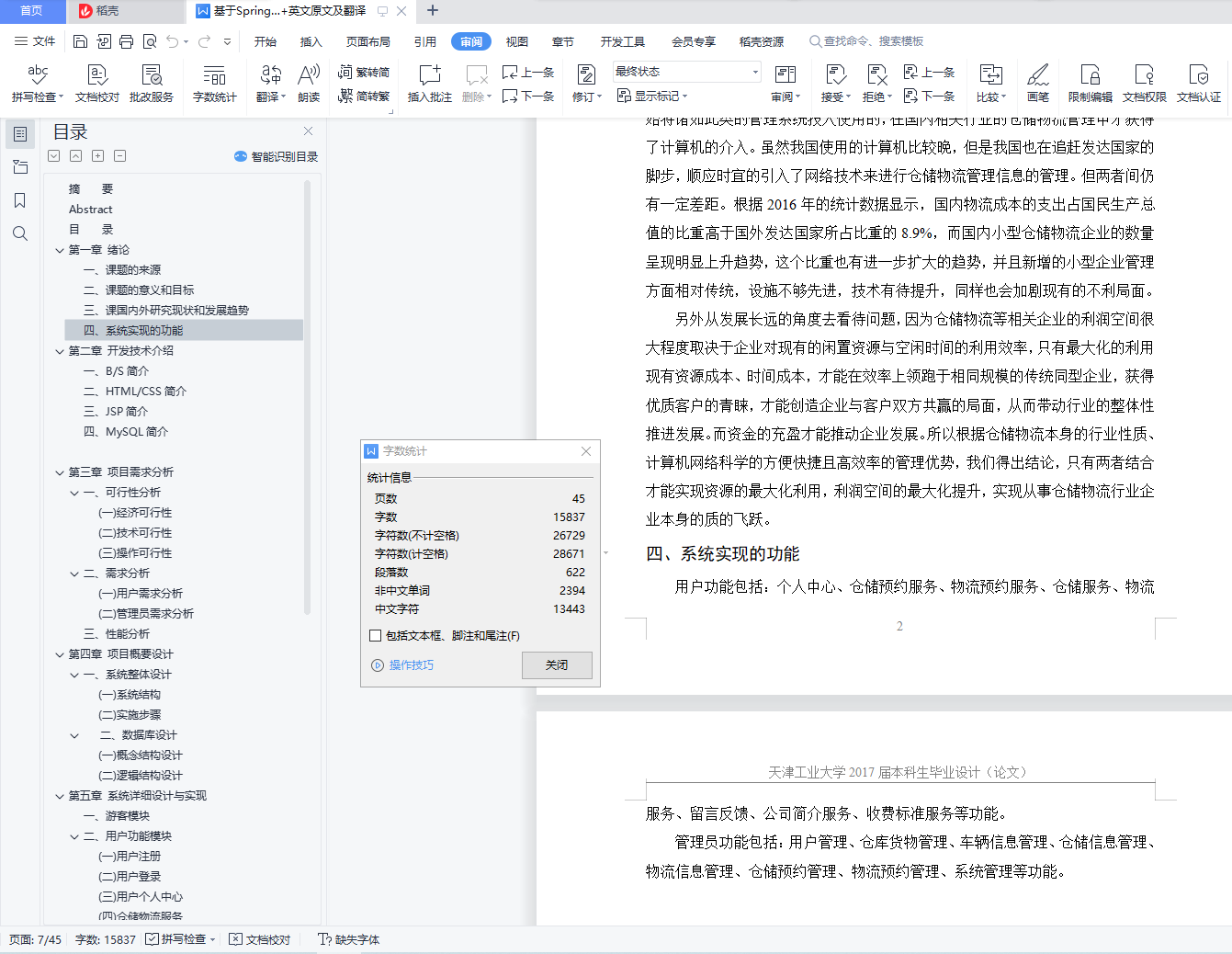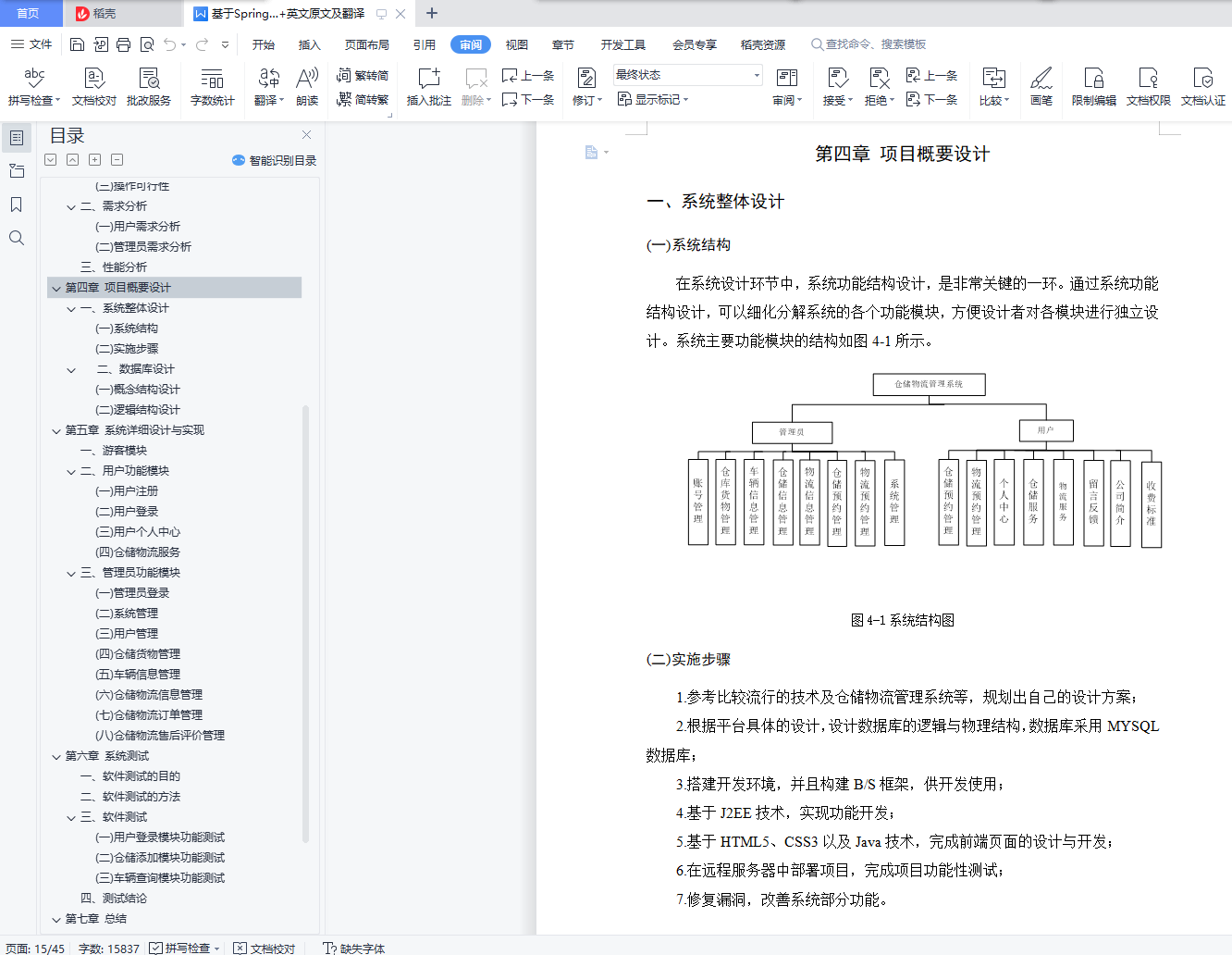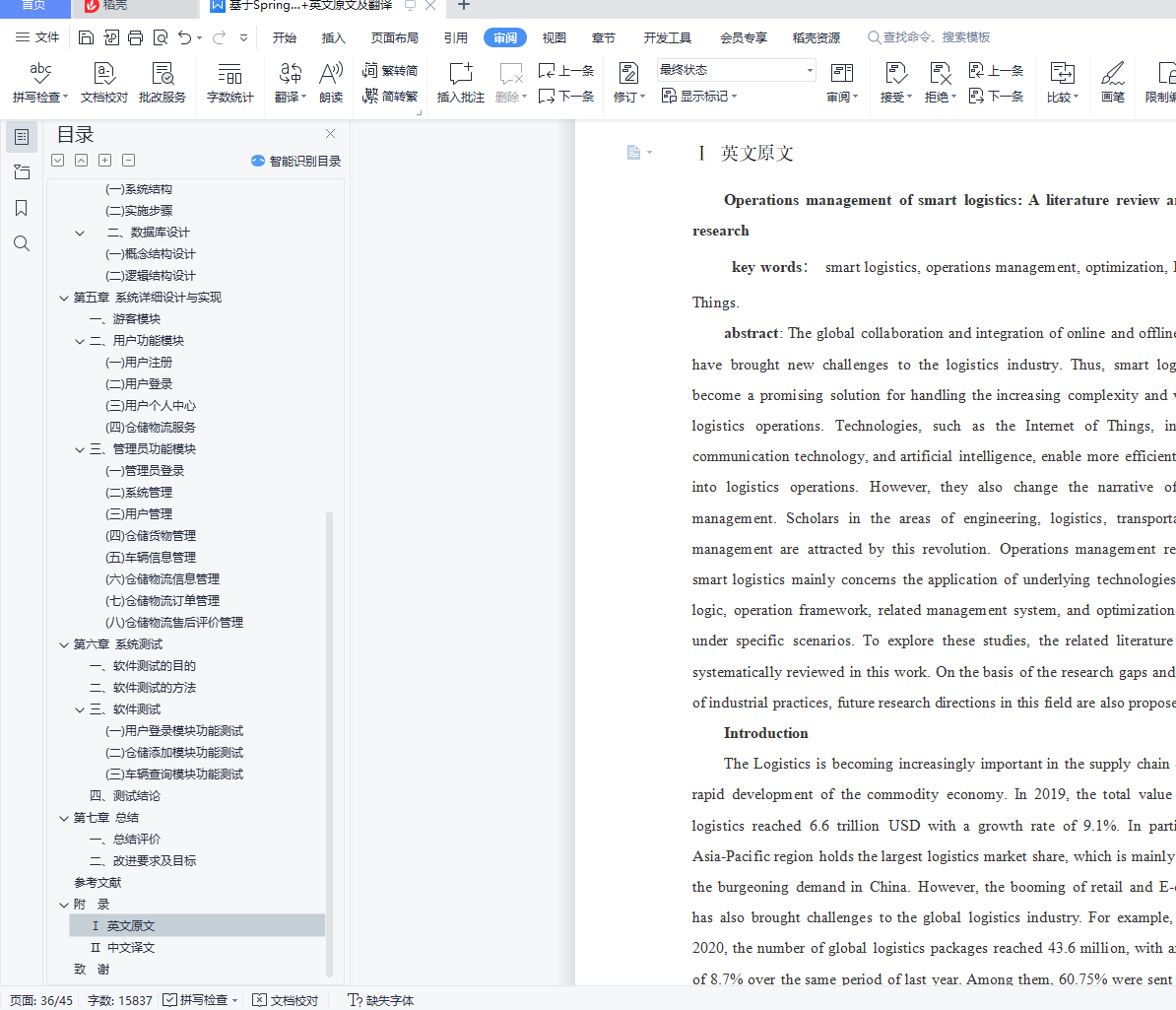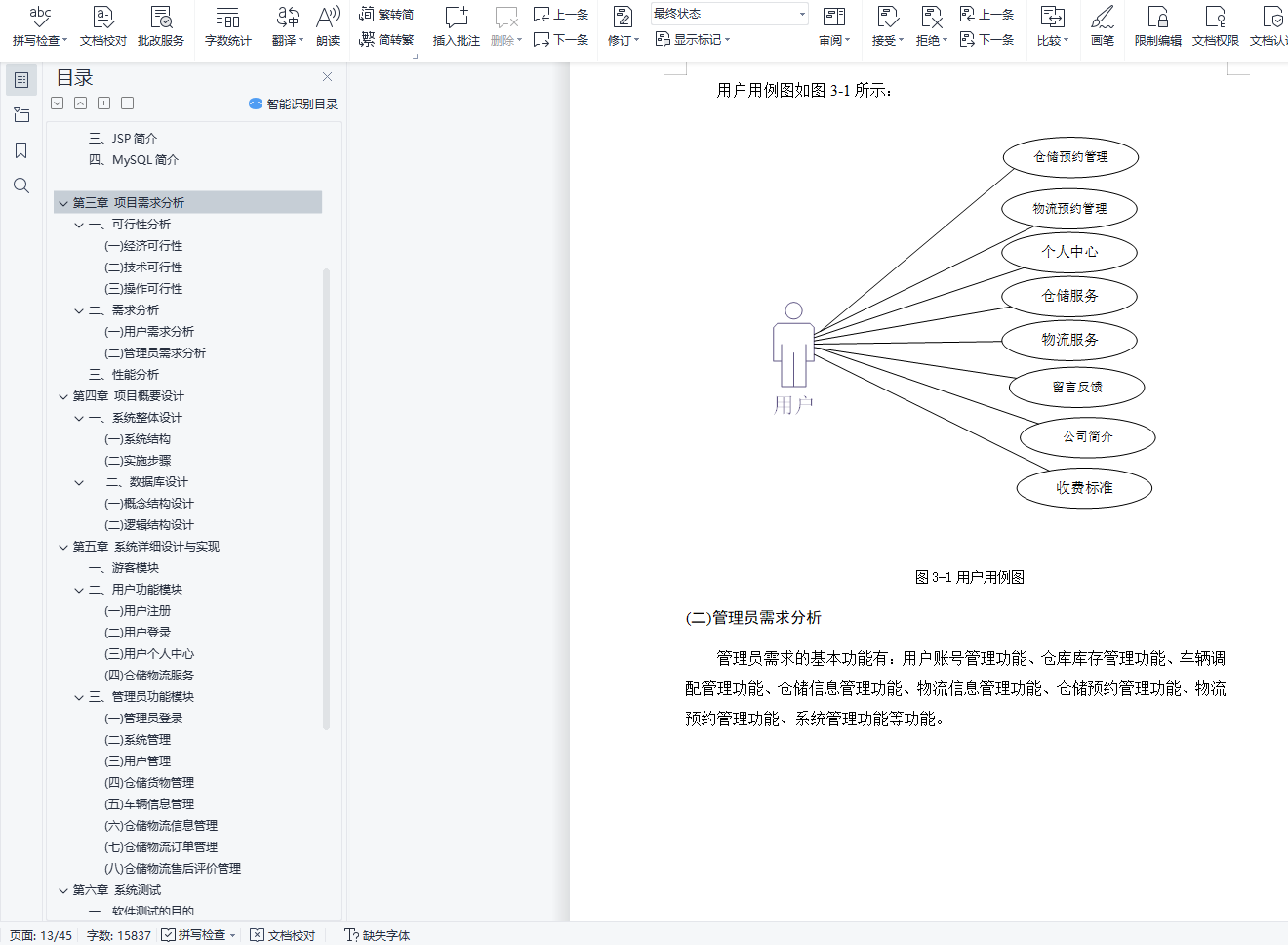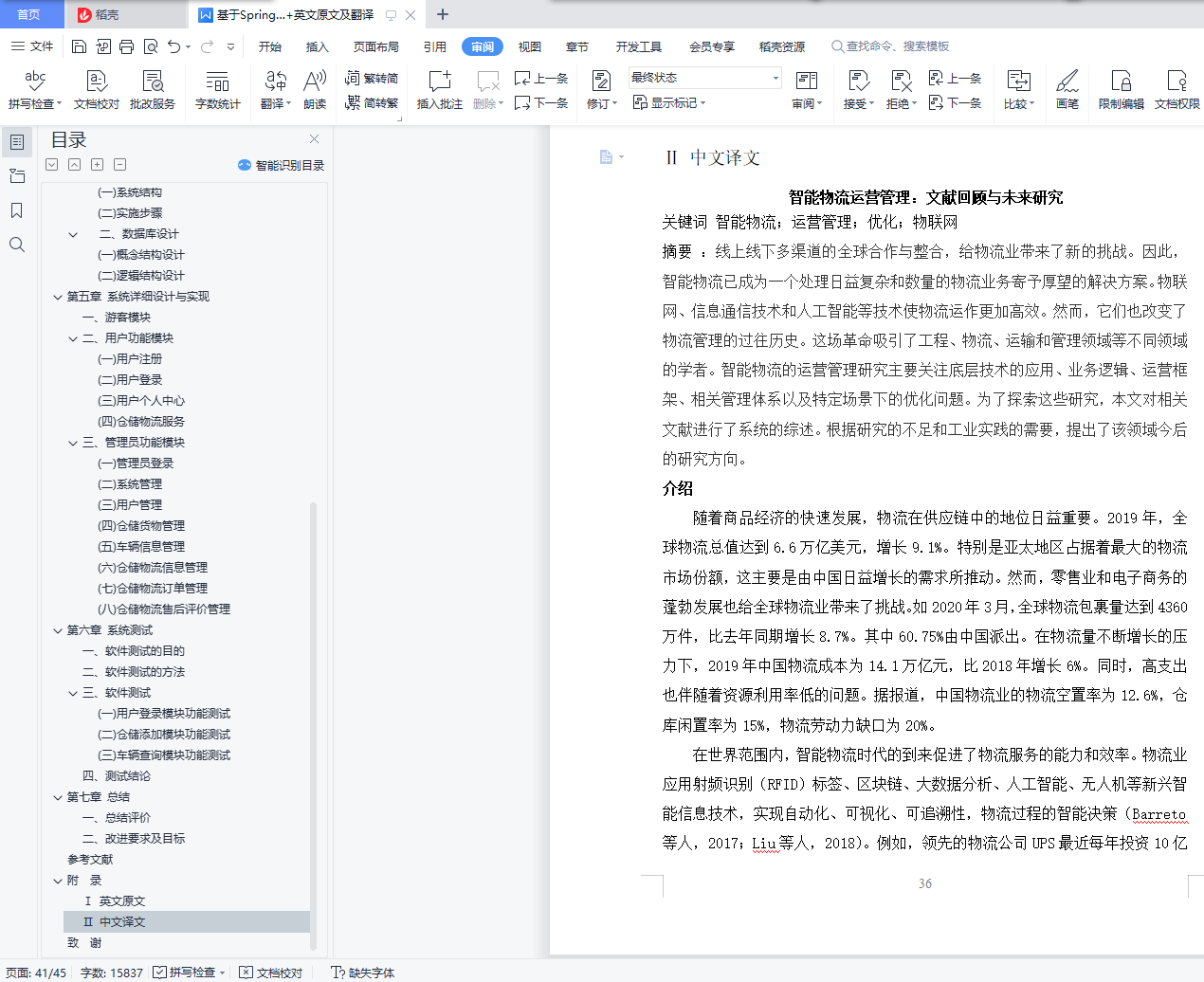摘 要
伴随我国华为5G网络核心技术的飞速发展,各行各业都在使用计算机管理系统来方便我们的日常事务处理,它们在人们生活当中起着关键性的辅助作用。这次所设计的仓储物流管理系统主要设计目标是实现对接用户的在线仓储物流管理功能,它可以模拟实现用户对所需要的仓储物流服务的预约、下单、付款、评价的全流程,以及商家对于相关信息的处理及后续安排。
仓储物流管理系统的开发语言主要使用的是JAVA,开发工具使用IntelliJ IDEA,基于B/S架构,数据库使用MYSQL。系统设计了两个角色包括用户角色与管理员角色。
该仓储物流管理系统的实现可以很好的解决小型相关企业仓储物流管理的问题,不仅能够为人们节省时间,还可以创造更好的效率,在对系统进行过详细的测试之后,将测试的结果反应到开发流程中,可以有效的将程序逻辑和代码进行改善,并且系统中的程序也能够正常的运转,该系统的操作不需经过培训,易于上手,便于进行后期推广。
关键词:Java;B/S结构;仓储物流管理系统;MYSQL数据库
Abstract
With the rapid development of China's Huawei 5G network core technology, all walks of life are using computer management systems to facilitate our daily affairs, and they play a key auxiliary role in people's lives. The main design goal of the warehousing and logistics management system designed is to achieve the docking user online warehousing and logistics management function, it can simulate the whole process of the user's warehousing and logistics service appointment, order, payment, evaluation, as well as the processing and follow-up arrangements for the relevant information.
The development language of the warehouse logistics management system is mainly JAVA, the development tool is IntelliJ IDEA, based on B/S structure, and the database is MYSQL. Two roles are designed in the system, including user role and administrator role.
The implementation of the warehousing logistics management system can well solve the problem of small companies, warehousing logistics management, not only can save time for people, but also can create better efficiency, after detailed test on system, test the results of the response to the development process, can effectively improve the program logic and the code of the And the procedures in the system can also operate normally, the operation of the system is easy to use without training, easy to carry out later promotion.
Keywords: Java; B/S structure; Warehousing and logistics management system; The MYSQL database
目 录
第一章 绪论 1
一、课题的来源 1
二、 课题的意义和目标 1
三、 课国内外研究现状和发展趋势 2
四、系统实现的功能 2
第二章 开发技术介绍 4
一、B/S简介 4
二、HTML/CSS简介 4
三、JSP简介 4
四、MySQL简介 5
第三章 项目需求分析 6
一、可行性分析 6
(一) 经济可行性 6
(二)技术可行性 6
(三)操作可行性 6
二、需求分析 7
(一)用户需求分析 7
(二)管理员需求分析 8
三、性能分析 9
第四章 项目概要设计 10
一、系统整体设计 10
(一)系统结构 10
(二)实施步骤 10
二、数据库设计 11
(一)概念结构设计 11
(二)逻辑结构设计 13
第五章 系统详细设计与实现 16
一、游客模块 16
二、用户功能模块 16
(一) 用户注册 16
(二) 用户登录 17
(三) 用户个人中心 17
(四) 仓储物流服务 18
三、管理员功能模块 20
(一) 管理员登录 20
(二) 系统管理 21
(三) 用户管理 21
(四) 仓储货物管理 22
(五) 车辆信息管理 22
(六) 仓储物流信息管理 23
(七) 仓储物流订单管理 23
(八) 仓储物流售后评价管理 24
第六章 系统测试 25
一、软件测试的目的 25
二、软件测试的方法 25
三、软件测试 25
(一)用户登录模块功能测试 25
(二)仓储添加模块功能测试 26
(三)车辆查询模块功能测试 27
四、测试结论 27
第七章 总结 29
一、总结评价 29
二、改进要求及目标 29
参考文献 30
附 录 31
Ⅰ 英文原文 31
Ⅱ 中文译文 36
致 谢 40
